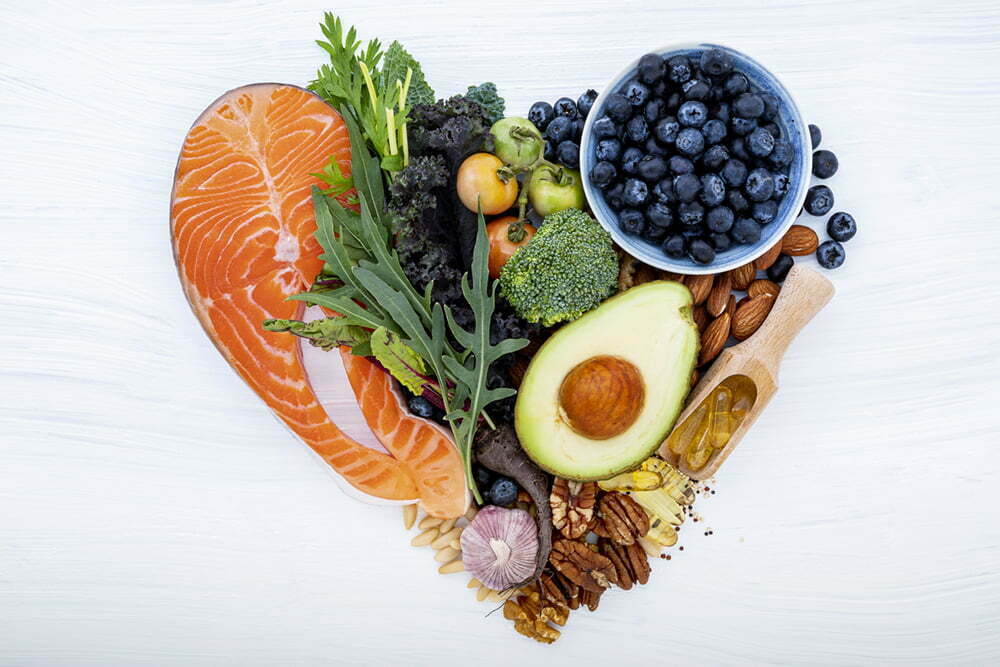On the face of this, it seems like a fairly obvious answer and one that you think the majority of people would know.
The worrying fact is that many people are still not fully aware as to what they are actually eating. Which could be the reason why obesity and diabetes, as well as a whole host of other illnesses, are on the rise.

You are What You Eat
Everything that you eat or drink will, for the most part, become part of you. So if you’re eating cereals, sandwiches, chocolate and crisps every day, you aren’t going to be in good health for long.
Remember, just because you aren’t sick doesn’t mean you are healthy, which gives real food for thought (no pun intended) for one famous quote by Hippocrates: “Let food be thy medicine and medicine be thy food”.
Why We Become Ill
Why do we usually become sick or ill or develop a certain type of disease or ailment? This, in part, is largely down to your body becoming malnourished and running out of the vital vitamins, minerals, proteins and fats it requires to perform everyday functions.
Simply put, we have 4 phases of health that we will highlight and how nutrient deficiency can cause us to become ill.

Phase 1 – Initial Depletion of Micronutrients
An initial depletion of micronutrients is usually characterised by changes in the metabolism of a particular nutrient. The body will use its reserves so that no disturbance to its function is easily detected, but in many instances the individual will feel tired with a “lack of energy”.
Are you constantly feeling tired or fatigued? This could be a warning sign that you need to introduce more vegetables or add a supplement to your diet.

Phase 2 – Reduced Biochemical Functions
The next stage talks about biochemical functions which your body will start to reduce, thus affecting various enzymatic reactions. Homeostasis, which is your body’s ability to regulate itself, will be affected and can cause a variety of physiological functions such as weight gain, low blood sugar and irregular heartbeat. Thankfully, this phase is easy to detect through a series of cravings for chocolate, fizzy drinks, etc.

Phase 3 – Serious Medical Symptoms
We will enter the next phase, where more issues will arise and can be extremely dangerous to your health. This will be characterised by serious medical symptoms or extreme changes in metabolic functions such as obesity, onset of diabetes, depression and panic attacks.
Everything will then be magnified with your cravings being more noticeable, possibly with even more uncontrollable cravings.

Phase 4 – Disease
The last and final stage is a mineral deficiency that is seen and characterised by the onset of a full-blown disease such as heart attacks, obesity, diabetes, etc.
In many instances, the clinical phase can be reversed but only if the correct nutritional advice and habits are followed. Left unchecked, the health of an individual can eventually lead to death.

What Can We Do?
Eating a balanced diet of fresh fruits and vegetables while avoiding processed foods is the way to go.
Trying to find the correct information can be difficult since there is a vast array of conflicting advice, which seems to contradict itself each week.
Keto, vegan, paleo, fruitarian – the list goes on. Not to mention, the myriad Instagram and social media experts who have largely achieved expert status through a self-evaluation of and who, for the most part, should be avoided altogether.
Nutrition and Our DNA
We may be very much alike, yet we are also extremely unique. No two humans are the same.
Each of our DNA code is built to encode a whole array of diverse physiological traits, from our eye, hair and skin colour to how tall we are, hence why we all look completely different.
We all understand that our genes affect how we all look but what most people still don’t seem to realise is that our genes will also affect our ability to breakdown and metabolise our food.
Luckily, as a result of some great strides forward in genetic science, health testing is now more readily available to the general public.

DNA Profiling
DNA analysis will look at a variety of genes that could have a potential impact on how your body reacts to different environments, such as dietary intake or how often you need to exercise.
Analysing your DNA is definitely a piece of your health puzzle, but it’s not the only definitive answer.
Nutrigenomics is a branch of genetics that looks at specific gene variants having an effect on your ability to absorb, transport and then metabolise a particular nutrient.
There have been many studies looking at both the nutrigenetic as well as nutrigenomic impact of specific nutrients.
Nutrigenomics Example
One example would be to look at an individual’s ability to convert beta-carotene found in plants into the more active form of vitamin A retinal by gene BCMO1.
There are two main polymorphisms to look at here, one will affect 42% BCO1 rs12934922 (A: T) of the population with the other at 24% rs7501331 (T: T or C: T)
Now, depending on which genetic variant of BCO1 (which is expressed within the gut) you have will reduce your ability to convert beta-carotene into retinal from between 30-70%. Your genetic predispositions for a particular food group, nutrient or trait is then calculated by taking a polygenic analysis and score, which looks at a panel of genes and SNPs (Single Nucleotide Polymorphisms) that have been extensively researched and weighed according to various factors such as the science institute, number of participants and the year of study.

Your Genetic Potential
We will all have genetic strengths and weakness regarding our diets, so why wouldn’t you want to know which foods or nutrients you will need either more or less of?
If you are predisposed to not absorbing a certain vitamin or mineral, then you could be heading down a dangerous path with your health and wellbeing.

